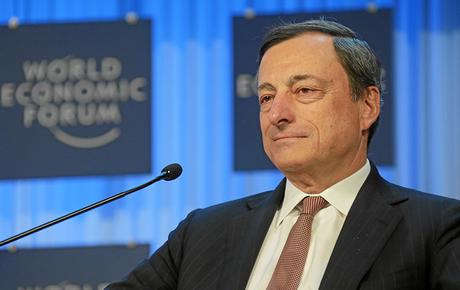Anxiety around the impact of global regulation on the cryptocurrency sector are clearly dissipating. Typically, we see regulatory tightening in phases; fear, the panic selling, then “cheap” coins. Then more positive rhetoric about a maturing marketplace soon to attract mainstream retail investors and institutional buyers.
With bitcoin breaking through the $10,000 mark this week, it should be noted that the price move is at relatively low volumes, and there may be resistance or certainly some form of consolidation. To give some context, 15 February saw global trading volume at 52,509 BTC compared with 495,883 and 271,450 on the 6th and 7th February alone.
Cryptocurrencies are trading higher across the board, with total market capitalisation standing at a jaw-dropping $500 billion. Bitcoin dominance (the proportion of the total capitalisation its value represents) has crept up slightly in recent days to 35.2%, according to coinmarketcap.com. Bitcoin is now similar to the US dollar ($) in the fiat currency world when it moves either way, the world feels it universally. When Bitcoin shakes, other altcoins react accordingly. So why after the January crash are coins coming back?
Various coins progression and evolution
A surge of 52% last week, with most of that price gain taking place in two days, reaching a high of $235, although it is currently priced at $212 according to Coinmarketcap.
Clear reasons behind the surge include the fact payments solution LitePay is nearing coming out of beta, a looming fork called Litecoin Cash and the coin’s growing popularity on the dark web. The Litecoin Cash fork is controversial. Litecoin, in itself a fork from bitcoin, differs from Bitcoin in its use of a hashing algorithm called scrypt. The new coin will also have a supply of 840 million which is 10 times that of Litecoin. Litecoin is increasing in popularity with criminals operating on the dark web. The dark web refers to websites that can only be accessed by using the Tor software that anonymises web browsing. A report by cyber threat intelligence back in 2016 uncovered a shift away from Bitcoin to other crypto, notably Litecoin, but also Dash and Monero probably for security reasons and privacy more than anything.
The transaction times on the congested bitcoin blockchain and the cost of transactions is also a possible concern for those involved in illicit activities, but more so for illegal marketplaces and not so much for money launderers transacting with large sums.
In conjunction, Ripple signed yet another deal with UAE-based remittance and payments company UAE Exchange and, separately, Western Union revealed it’s currently trialling Ripple’s blockchain-based solutions. That could be massive.
Ripple is also working with the Saudi Arabia central bank on blockchain solutions for cross-border payments between the regional banks. The UAE news earlier this week had helped to push the price of Ripple’s XRP token back above a $1.12, despite the fact that the deals don’t necessarily involve the companies concerned using the token to fuel transactions.
Ethereum Classic jumped last week and, again, the reasons behind it had no tangibility. Trading above $36, a 40% spike from $21 on 11 February, Ethereum Classic has been received rave reviews from Barry Siebert, the entrepreneur behind the Grayscale Bitcoin Investment Trust and the Digital Currency Group which owns CoinDesk and has a stake in Coinbase.
Mario Draghi and ECB refuse to regulate

US Congressional hearings turned out to be fairly positive for cryptocurrency and that has helped sentiment. The European Central Bank (ECB) is the latest institution to pass judgment on crypto, and market participants will have been pleased with what they heard. One of the 5 President’s Mario Draghi unexpectedly dismissed the notion that bitcoin was a currency, citing its lack of a backer, no protection for users and volatility. Asked whether the ECB was going to regulate bitcoin, Draghi left no room for misinterpretation.
“Many of you posted questions about whether the ECB is going to ban bitcoins or it’s going to regulate bitcoins,” said Draghi. “I have to say it’s not the ECB’s responsibility to do that.”
Apparently, there were several informal discussions at the World Economic Forum in Davos, central bankers are expected to openly address the question of how to deal with the new asset class when they gather in Buenos Aires for the G20 meeting of political and financial representatives of the major economic powers in March. Draghi went on to be pleasantly positive and was quoted as saying it was “quite promising”, with potentially “many benefits”. The world’s major and central banks have all been testing blockchain technology. Draghi continued:
“We’re very interested in this technology but it’s still not secure for central banking and therefore we need to look through it and investigate it more.”
JP Morgan produce cryptocurrency report
JPMorgan changed their tune (finally) and was quoted as “crypto is here to stay but won’t overthrow fiat.” But we all knew that anyway. The US investment bank whose chief executive Jamie Dimon famously described bitcoin as a fraud, has taken a positive line on crypto. To save you the time, the main summary from the 71-page in-depth report produced by JPMorgan analysts, is the observation that, far from the sector value collapsing to zero, crypto is here to stay:
“(cryptocurrencies)are unlikely to disappear completely and could easily survive in varying forms and shapes among players who desire greater decentralization, peer-to-peer networks and anonymity, even as the latter is under threat”.
The bank’s report balanced that conclusion with a more doubtful stance on the possibility of bitcoin or any other crypto contender challenging the monopoly of central bank money issuers, stating:
They continued
“It will be extremely hard for (cryptocurrencies) to displace and compete with government-issued currencies, as dollars to euros and yuan are virtual natural monopolies in their regions and will not easily give up their seigniorage profits (typically, derived from the difference between production cost and face value of fiat).”
Any significant financial intuition sees value in blockchain technology with benefits in cutting costs and increasing efficiency.
Microsoft investigates blockchain

Away from finance, interest in blockchain moving from prototypes to real products, tech giant Microsoft announced that it was looking to develop decentralised ID systems in its products and hopes to use public blockchains.
Bitcoin futures have been quiet recently, but US ratings agency Moody’s said in a report on last Wednesday that fears the instrument might destabilise the financial system were overdone.
“So far Bitcoin futures volumes have been low, but CME and others hope to tap into the investment community’s interest in the underlying asset.”
This was derived from an 11-page analysis of the impact of bitcoin futures.
In related news, the US Commodity Futures Trading Commission, which oversees the futures markets, is setting up two sub-committees of its Technology Advisory Committee to assess issues surrounding cryptocurrencies and blockchain tech.
Put your wallet away
And finally – it’s all kicking off between web-based Ethereum wallet MyEtherWallet, commonly used for sending ether funds to initial coin offering contribution wallets, as well as to store Ethereum-compliant tokens.
More for loyal, dedicated followers of the detail about crypto goings on – Taylor Monahan, co-developer of MEW, as it is affectionately known in the community, has left to build an alternative product called MyCrypto. The other MEW developer, known as Kvhnuke, remains in control of MEW’s digital assets such as GitHub repository and website. The surprise announcement set off panic in the community until the situation became a little clearer, although there has been no official comment from Kvhnuke about what the developments may hold for the future of MEW.
These kinds of rumours and murmurs will likely help to speed the adoption of hardware wallets such as Nano Ledger although the former had to admit earlier this month that there was a “theoretical” vulnerability in its code that meant users should always double-check wallet addresses. Not great. So, it’s no surprise the market is as volatile as it is.

